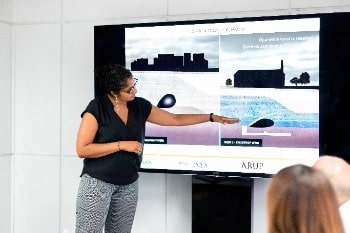Understandably, the thought of doing an interview presentation can be nerve-wracking, especially if you have never done one before. However, don't worry, as listed below are some helpful tips on how to make a great presentation and bring the information across in a confident manner that will help you ace your interview!
Where to Begin?
Before you start to plan your presentation, you'll need a well-formed idea of what you are expected to put together. Therefore, when you are offered the interview, take the opportunity to get as much information about the presentation as possible so that you are not left with any doubts.
Here are some useful questions that you can ask:
Is there a minimum/maximum time limit?
What is the main topic/theme?
Who will you be presenting to? (This allows you to understand your audience and adapt your tone and approach accordingly).

How to Structure Your Presentation
Start with a grabbing introduction, one which clearly informs the audience what you will be discussing and focuses their attention on you! You don’t want any glazed eyes, especially right at the beginning!
Have an overall argument, theme or main idea for your presentation.
Separate your ideas under sub-headings or divide them between slides.
Add some quotes, facts or statistics, as it shows that you have done your background research and are interested in the topic.
Conclude your presentation by giving a quick summary of your points and how they tie into the main idea.
Ask the audience if they have any questions. This is your opportunity to show any extra knowledge you have and how you respond well to thinking on your feet! If they ask a question that you don’t know the answer to, don’t panic, they aren’t trying to catch you out! Just kindly let them know that it’s not something you prepared and maybe even offer to look into it for them, they would certainly be impressed by that!
The Do’s and Don’ts of Layout
Ensure your slides are straight to the point by only sharing key points.
Give your slides a sub-heading/signpost of what you will be discussing.
Keep your layout simple and professional. One way to impress your interviewer is by reflecting on the company’s style in the PowerPoint. For example, you can use similar fonts/colours as their website. This shows that you have done your homework and have looked into the company.
Incorporate different formats, such as graphs, diagrams, videos and images. This gives your presentation more depth and helps make it more interesting.
Use flashy slide transitions and unnecessary decorations. This will distract from your overall point and might give them the impression that you are not taking the interview process seriously.
Overfill each slide with information. The audience shouldn’t have to read a mini-essay during a presentation. This will cause them to lose interest and miss out on crucial information.
Practice makes Perfect
Before your interview, it’s a good idea to practice your presentation until you know it inside and out. This will help you avoid any awkward fumbles and will show potential employers that you are well-prepared.
You can practice by presenting in front of a family member, or friend or even record yourself so that you can watch back the video and see where you can improve. Don’t forget to ask for feedback so that you can perfect it!
How to Give an Engaging Presentation
The way you deliver a presentation is equally as important as the presentation’s content. If you come across as confident and knowledgeable within the subject area, then you are more likely to engage your audience. However, if you mumble and have your back turned to the room then it will cause their attention to drift. To stop this from happening, try to…
Project your voice and speak clearly. Sometimes, nerves can get the best of us and our natural instinct is to rush through a presentation so that it can be over and done with. If you feel that this is starting to happen and you are speaking a little bit too fast, then take a few deep breaths and pause.
Give eye contact! Avoid staring down at your notes, they are there in case you need a little prompt, not a lifeline.
Impress your audience and interact with them during your presentation. You can do this by asking them some questions or opinions on your points! It could even start an interesting discussion.
Smile and be friendly!
